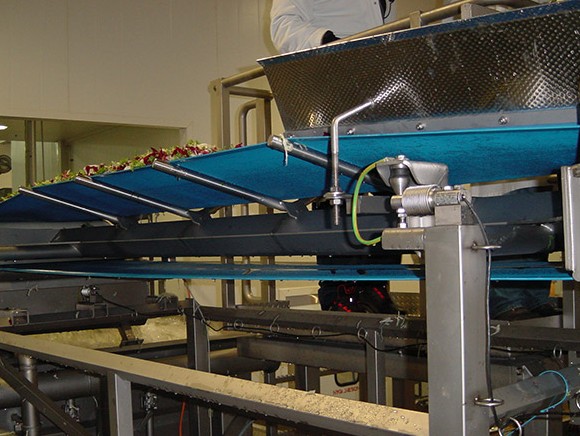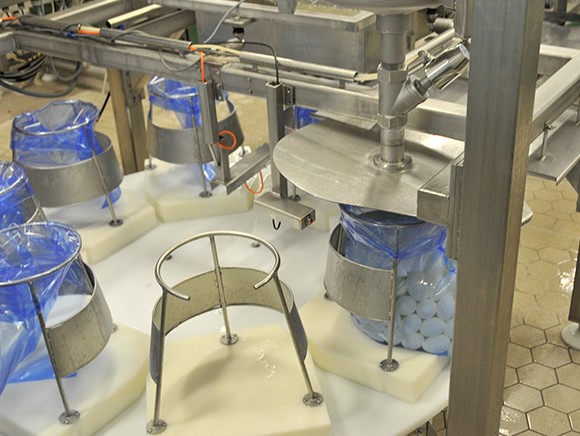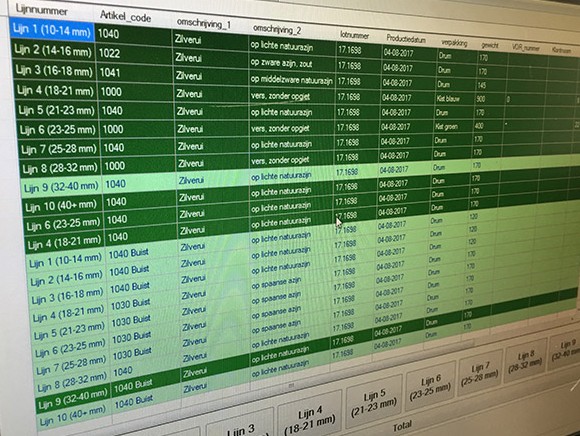
Natural resources continue to pose a challenge for the food industry, because natural also means that composition varies, which makes preparing a consistent product difficult. Checking and adjusting all weights is essential in this process, from the raw material to the final product. The proper tools are indispensable for this.
In order to preserve food safety, reliable, hygienically designed and precise measurement systems are essential, as is an adequate processing of weighing results. Having a quality assurance system, along with tracking and tracing facilities, is crucial. The process can only become safe and hygienic if the sensors on the measurement devices are located outside of the pathways for the resources, are made of stainless steel that can be thoroughly cleaned and are hermetically sealed (protection class IP68/IP69K). PENKO Engineering B.V. illustrates the possibilities in three practical examples.
Lettuce types are limited in how they can be mixed. The structure of sliced lettuce is irregular, which makes it difficult to inspect during transport, and lettuce is airy, so it has a low bulk density. Another complication is that a quantity distributed into a large number of consumer packages must also have the same composition. The movement characteristics of lettuce are only suitable for one form of transportation: the conveyor belt. This handles the product gently, so that the structure and appearance remain attractive. Adding them together volumetrically (where each lettuce type has its own belt and each belt has its own speed with regard to the blend to be created) is not sufficient. The unpredictable behaviour of lettuce yields irregular mixtures, the thickness of the product layers is difficult to regulate, and stagnations in the process are not detected. The solution is to define the exact quantity that goes on the belt. Weighing the belt mechanism provides the mass per metre of belt (kg/m), and measuring the belt speed gives the number of metres per second (m/s). Multiplying these values, results in the mass per time (kg/s), which is exactly what the industry wants to regulate. If the belts transport each lettuce type with the correct mass per unit time, then the perfect salad blend is the final product. Since the transfer of mass is controlled, the loading into the centrifuge later in the process is controlled as well.
After boiling and peeling the eggs, processing is performed by weighing and counting equipment. In order to preserve the quality of boiled eggs during storage and transport, they are covered in liquid during packaging. This depends upon the use of the eggs and is client specific. For this reason, the amount of liquid is created in varying quantities that depend on the type and number of packages. Combining multiple types of liquids in varying quantities requires a flexible manufacturing system. In the mixing tank, a variety of components are measured out one by one. If necessary, the liquids can be produced in multiple batches.

The most traditional way of packaging eggs is in tubs, which vary in content from 20 to 168 portions. They are also packaged and supplied by weight.
The poly plastic bag is very well suited to industrial processing. Much like tubs, they are filled based on portion and weight and delivered to the client in plastic boxes. For large industrial processors, there are plastic and stainless steel tanks that are filled with 750 to 850 kilograms of eggs. In order to determine the weight, a platform for 1500 kg is used. This regulates the portioning of the eggs and the liquid used to cover them. In order to ensure that there is enough liquid, all systems utilise automatic taring and self-adjusting correction.
Onions are provided fresh from the country in bulk. They are washed, peeled, sorted, inspected, preserved and packaged. Preserved products are covered in liquid, vinegar or brine. It is important for the quality of the final product that onions are processed quickly after harvest. Harvest typically takes place within 2 months, often in August and September. The rapid degradation of quality after harvest demands high requirements for the equipment: if processing slows, quality decreases. Gross and net scales are used for filling the packages. Any liquid for covering the onions is first prepared by weight, after which it is added according to a gross or net measurement. The liquid is not a part of the drained product, but it is important for product quality that the onions be fully submerged in the liquid. The advantage of weighing is the guarantee that the right quantity of the product is in the package.

The FLEX-2100 is often chosen as the weight control. This offers many communication options, including Ethernet. The controls are simple, thanks to a touch screen and clear presentation of the weighing information on a large display. The measurement speed is 1,600 measurements per second. All data can be collected and categorised centrally. In this manner, all information is immediately available, from arrival to client delivery. PENKO Engineering has created software packages for the information, to provide both preventive and restorative quality assurance measures.
Image belt: Weighing belt for lettuce with sensor
Image bags: Net weight filling of poly plastic bags
Image PC: Software for tracking and tracing
Source: © Penko